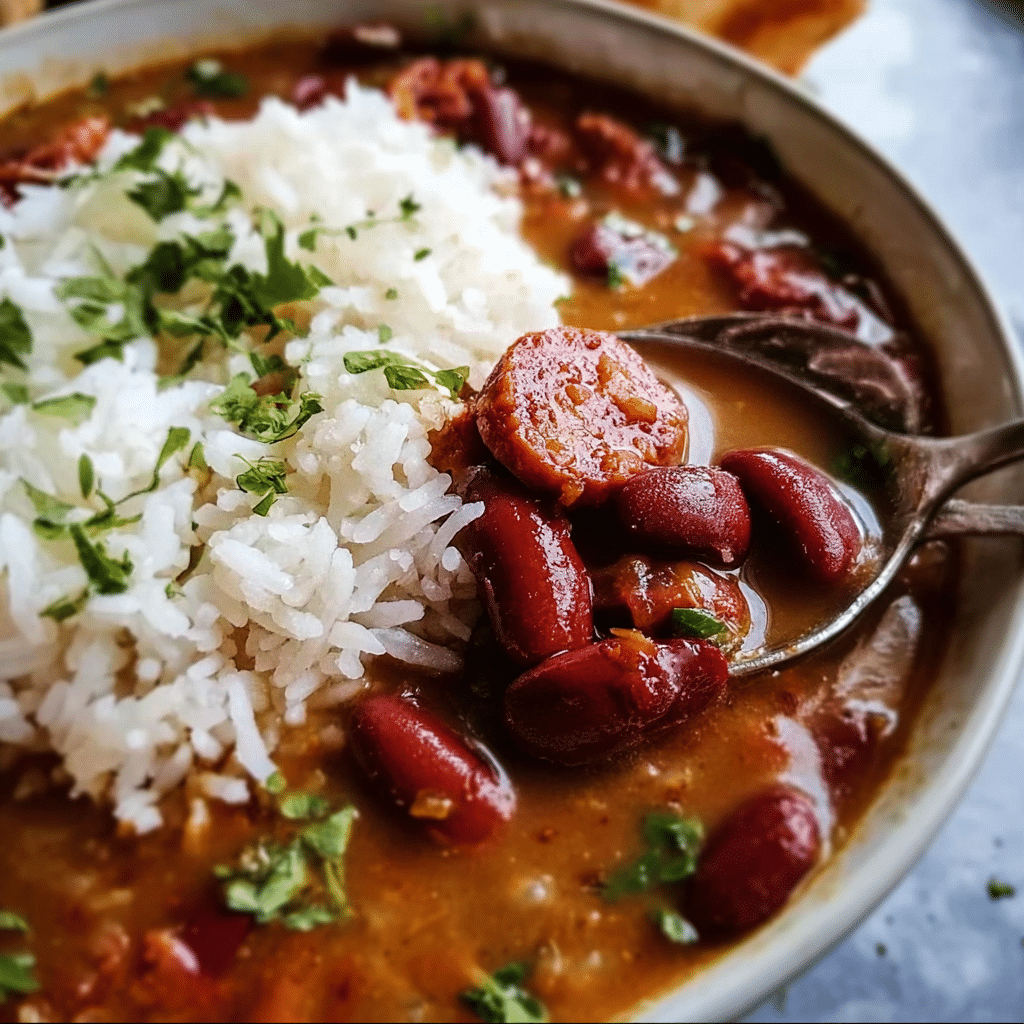Korean cuisine is famous for striking that perfect flavor harmony between sweet, savory, and spicy—and these Sweet and Savory Sticky Korean Chicken Thighs are no exception. If you’re craving something bold, juicy, and irresistibly sticky, this recipe will be your new go-to favorite. From the deeply marinated chicken thighs to the rich gochujang-based glaze, everything about this dish screams comfort and punchy flavor.

Whether you’re looking to whip up a quick weeknight meal or impress dinner guests, this recipe delivers taste and texture in every bite. Plus, you’ll get tips on the best cuts of chicken, how to master the sticky sauce, and flavorful side pairings that complete the experience.
Let’s dive into what makes this dish a serious crowd-pleaser.
What Makes Sweet and Savory Sticky Korean Chicken Thighs So Addictive?
Flavor Profile: The Perfect Balance of Sweetness, Heat, and Umami
At the heart of Korean sticky chicken thighs is balance. The heat of gochujang (fermented Korean chili paste) mingles with soy sauce, garlic, and a hint of honey or brown sugar. It’s a layered profile that plays on your taste buds—savory umami, gentle heat, and a glossy sweetness that caramelizes beautifully.
You get a dish that feels indulgent yet balanced, spicy but not overpowering, and sweet without being sugary. That “sticky” finish? It locks in flavor and coats the chicken in a glaze that clings to every bite.
Print
Sweet and Savory Sticky Korean Chicken Thighs
Description
Perfectly crispy fried chicken is tossed in an irresistible sweet and savory glaze featuring toasted sesame and fresh onions. This quick and easy sweet sticky Korean chicken recipe comes together in just 30 minutes using simple pantry staples. It’s a fantastic main dish that’s even better than takeout, saving you time and money!
Ingredients
- 6 skinless boneless chicken thighs
- ¼ cup cornstarch or potato starch
- 1 small onion diced
- ⅓ cup vegetable oil or any neutral oil
- 1 green onion finely chopped for garnishing
Sauce:
- 1 green onion finely chopped
- 4 ½ tablespoon regular soy sauce
- 3 ½ tablespoon brown sugar light or dark brown sugar both work
- 3 garlic cloves minced
- 1 tablespoon honey or light corn syrup
- 1 tablespoon sesame seeds
- ½ tablespoon sesame oil
- 1 tablespoon cornstarch or potato starch
- 1 cup water room temperature or cold
Instructions
-
In a small bowl, combine sauce ingredients as listed above and set aside.
-
Dice chicken thighs into 1.5-inch wide pieces.
-
In a large mixing bowl, add diced chicken followed by cornstarch. Toss until each piece is coated in cornstarch. Set aside. If the starch is falling off, feel free to add more cornstarch.
-
Heat vegetable oil in a large pan on medium-high heat. Fry chicken in small batches until golden brown on both sides, about 5-7 minutes.
-
Remove and transfer chicken to a wire rack or a paper-towel lined plates to remove excess oil. Leave 2 teaspoon or 5 ml of the oil in the pan, discarding the rest.
-
Fry chopped onions and cook until softened, about 1 minute.
-
Pour in the sauce and simmer until thickened.
-
Toss in fried chicken with the sauce. Garnish with green onions. Remove off heat and enjoy!
Origins: A Look into the Korean Culinary Roots of Sticky Chicken
Sticky chicken has deep culinary roots in Korean “yangnyeom” cooking, where sauces are everything. While Korean fried chicken often grabs the spotlight, sticky chicken thighs borrow similar flavor bases—but with a tender, saucy twist.
The focus isn’t on batter but on simmering or roasting chicken in sauces that caramelize naturally, a technique rooted in home-style Korean dishes. It’s all about infusing depth, not just heat.
Korean households have long used soy, garlic, and gochujang as base flavors, and this dish is a modern tribute to those foundations—made more accessible for busy home cooks.
Why Chicken Thighs? Juiciness and Flavor vs. Chicken Breasts
Chicken thighs are the true MVP in this dish. Compared to chicken breasts, they’re richer, juicier, and more forgiving during cooking. The extra fat content means they don’t dry out, especially when simmered in a sticky sauce.
Plus, their natural texture allows the marinade and sauce to cling more effectively, delivering an even flavor distribution throughout. Whether you’re cooking boneless or bone-in, thighs simply give better results in Korean-style preparations.
Ingredients Breakdown for Korean Sticky Chicken Thighs
Key Ingredients: Gochujang, Soy Sauce, Garlic, and More
Every layer of flavor in Sweet and Savory Sticky Korean Chicken Thighs starts with a few essential Korean pantry staples:
| Ingredient | Purpose |
|---|---|
| Gochujang | Adds spice, depth, and fermented umami |
| Soy Sauce | Salty, savory backbone for the sauce |
| Garlic | Provides aromatic bite and warmth |
| Sesame Oil | Adds nuttiness and silky finish |
| Rice Vinegar | Cuts through sweetness for balance |
This holy grail combination creates the sticky base for your marinade and sauce. Gochujang, in particular, is irreplaceable. It’s a slow-fermented paste made from chili peppers, glutinous rice, and soybeans—thick, rich, and packed with flavor.
The Korean chicken recipe with gochujang has become popular worldwide for this very reason: balance. It’s bold yet palatable, spicy but not searing, making it the perfect gateway to Korean home cooking.
Sweet Elements: Honey vs. Brown Sugar
A big part of what gives the thighs their sticky coating is the sweet component. Here are two standout options:
- Honey: Adds light sweetness and helps caramelize the surface
- Brown Sugar: Offers deeper molasses flavor and richer stickiness
You can use either—or a combination. Honey gives the dish a clean glaze, while brown sugar enriches it with depth and a toffee-like aroma. Want something different? Maple syrup or even pineapple juice can add a tropical twist.
Adjust the sweetness to your taste. Korean sticky chicken sauce is highly customizable.
Optional Add-ins for Elevated Flavor
Want to take your dish to the next level? Try these optional ingredients:
- Grated ginger: Brings warmth and slight sweetness
- Chili flakes or Korean gochugaru: Adds heat without bitterness
- Pear purée or apple juice: Common in Korean marinades for natural sweetness
- Cornstarch slurry: Use sparingly if you want to thicken the sauce faster
For extra umami, a touch of fish sauce or anchovy paste can work wonders—but it’s completely optional.
Preparing Chicken Thighs the Right Way
Boneless vs. Bone-in: What’s Best for This Recipe?
When making sweet and savory sticky Korean chicken thighs, one big decision is: boneless or bone-in?
- Boneless thighs cook faster and are easier to slice or serve in a bowl.
- Bone-in thighs deliver more flavor and stay moist longer, especially when baked.
If you’re using the oven method, bone-in thighs with skin-on caramelize beautifully under high heat. For skillet or air fryer, boneless skinless thighs may be more convenient. Either way, both options soak up the marinade and glaze perfectly.
How to Trim and Prep Chicken Thighs for Maximum Flavor
Prepping chicken thighs properly ensures even cooking and better flavor absorption:
- Trim excess fat and skin (if bone-in).
- Pat dry the thighs with a paper towel to remove moisture.
- Score the surface lightly with a knife if using bone-in to allow marinade to penetrate.
Always wash hands and sanitize utensils after handling raw chicken to avoid cross-contamination.
Marination is where flavor magic happens…
Marinating: Time and Technique for Deep Flavor Infusion
For the most flavorful Korean sticky chicken thighs, marinate your chicken for at least 30 minutes, but 2–4 hours is ideal. Overnight? Even better.
Here’s a quick marinade recipe:
- 2 tbsp gochujang
- 1 tbsp soy sauce
- 1 tbsp sesame oil
- 2 cloves garlic (minced)
- 1 tbsp honey or brown sugar
- 1 tsp grated ginger
Mix and pour over trimmed thighs. Store in a resealable plastic bag or covered bowl in the fridge.
Massage the marinade into the meat. This ensures each bite is deeply seasoned, not just glazed on the surface.
How to Cook Sweet and Savory Sticky Korean Chicken Thighs
Pan-Seared Method for Crispy Texture
Want sticky Korean chicken thighs with a crisp outer layer and juicy center? Pan-searing is the go-to method.
How to do it:
- Heat 1 tbsp of neutral oil (canola or avocado) in a non-stick or cast iron skillet over medium-high heat.
- Add marinated chicken thighs skin-side down (if using skin-on). Let them sizzle without flipping for 4–6 minutes until browned.
- Flip, cover the pan, and cook another 5–7 minutes until cooked through.
- Pour the remaining marinade or pre-mixed sauce into the pan. Simmer 3–4 minutes until thick and sticky.
The sauce will bubble and caramelize, coating the thighs in a flavorful, glossy layer. Be careful not to burn the sugars—medium heat is your friend.

This method is fast, full of texture, and perfect for weeknight dinners.
Oven-Baked Sticky Korean Chicken Thighs: Step-by-Step Guide
If you’re cooking for a group or want to minimize stovetop cleanup, baking is a reliable method. It’s also ideal for bone-in chicken thighs.
Baking Instructions:
- Preheat oven to 400°F (200°C).
- Place marinated thighs in a baking dish or on a foil-lined tray.
- Bake uncovered for 30–35 minutes.
- Halfway through, baste with marinade or sauce from the pan.
- Broil for the last 3–4 minutes to get a sticky, slightly charred finish.
The oven method develops rich flavors as the marinade caramelizes naturally. Make sure the internal temp reaches 165°F (74°C) before serving.
Air Fryer Option: Fast and Crispy Alternative
In a hurry? The air fryer delivers speed and crispy edges with less mess. Use boneless thighs for even results.
Air Fryer Instructions:
- Preheat air fryer to 380°F.
- Spray basket with oil and place thighs in a single layer.
- Cook for 14–16 minutes, flipping halfway.
- In the last 2 minutes, brush with sauce and return to the fryer to set the glaze.
The result? Tender chicken with a caramelized crust—ready in under 20 minutes.
Creating the Perfect Korean Sticky Chicken Sauce
Sauce Base: Gochujang, Soy, Garlic, and Sesame
The heart of any Korean sticky chicken recipe is its sauce. Rich, sticky, and flavorful—this sauce clings to the chicken like magic. Here’s the basic structure for a perfect Korean-style glaze:
| Ingredient | Role in Sauce |
|---|---|
| Gochujang | Main source of heat, depth, and umami |
| Soy Sauce | Adds saltiness and balances sweetness |
| Garlic (minced) | Brings punchy aroma and flavor |
| Honey or Brown Sugar | Creates the stickiness and sweetness |
| Sesame Oil | Gives a nutty, toasted finish |
| Rice Vinegar | Balances the richness with acidity |
Simply whisk all the ingredients in a bowl until smooth. For a silkier finish, heat the mixture in a pan for 2–3 minutes to melt the sugars and activate the gochujang.
Pro Tip: Always taste the sauce before adding it to the pan or baking dish. Adjust salt, sugar, or spice levels to suit your palate.
Adjusting Sweetness and Spice to Taste
The beauty of this sweet and savory Korean chicken sauce lies in its flexibility.
- Too spicy? Reduce gochujang or mix in extra honey or sugar.
- Too sweet? Add more soy sauce or a splash of vinegar.
- Need more depth? Stir in a teaspoon of hoisin or oyster sauce.
- Want it hotter? Toss in Korean chili flakes (gochugaru) or a few drops of sriracha.
Korean cuisine is all about balancing opposites, so feel free to play until the flavor hits just right.
How to Thicken the Sauce Without Cornstarch
While cornstarch is commonly used, you can skip it if you want a more natural glaze. Here’s how:
- Simmer gently until the sauce reduces by half.
- Use honey or brown sugar as natural thickeners.
- Coat the chicken in the sauce near the end of cooking to lock it in while maintaining thickness.
The key is low and slow cooking—let the sugars caramelize naturally. You’ll end up with a rich, glossy coating that defines this dish.
Serving Suggestions and Side Dish Pairings
Traditional Korean Sides: Kimchi, Pickled Daikon, Steamed Rice
Pairing your sticky Korean chicken thighs with classic Korean sides elevates the dish from great to unforgettable.
Here are some authentic go-to pairings:
| Side Dish | Why It Works |
|---|---|
| Steamed White Rice | Neutral, balances bold sauces |
| Kimchi | Fermented, spicy tang cuts richness |
| Pickled Daikon | Adds crunch and brightness |
| Korean Cucumber Salad (Oi Muchim) | Offers cooling relief from spice |
These sides not only enhance the flavors but also offer texture contrast—soft chicken, crisp veggies, and chewy rice in every bite.
If you’re going full Korean-style, serve everything on a platter and let guests build their own plates family-style.
Western-Style Pairings: Roasted Veggies, Mashed Potatoes
If you want to keep things more fusion or pantry-friendly, Western sides work surprisingly well too:
- Garlic mashed potatoes: Soak up the sticky sauce with creamy richness
- Roasted Brussels sprouts or broccoli: Their bitterness balances sweetness
- Corn on the cob: Adds natural sweetness and a smoky twist
- Baked sweet potatoes: A nutrient-rich pairing that plays on the sweet notes
This combination is perfect for those who love Korean flavors but want familiar textures and formats. You can even create a sticky Korean chicken bowl meal with quinoa, avocado, and a fried egg.
Creative Presentation Ideas for a Modern Twist
Want to impress? Here are a few plating ideas:
- Sticky chicken sliders on mini brioche buns with slaw
- Korean chicken lettuce wraps with gochujang mayo
- Build-your-own bento boxes with rice, chicken, and kimchi
- Serve on a wood board “tapas style” with chopsticks and pickles
Korean Chicken Variations Worth Trying
Korean Fried Chicken vs. Sticky Chicken Thighs
Korean fried chicken (KFC) has earned a cult following worldwide. But how does it compare to sticky chicken thighs?
| Feature | Korean Fried Chicken | Sticky Chicken Thighs |
|---|---|---|
| Texture | Super crispy, double-fried | Tender and saucy |
| Cooking Method | Deep-fried | Pan-seared, baked, or air-fried |
| Sauce Application | Often dipped post-fry | Cooked in or basted while baking |
| Flavor Profile | Bold, often spicier | Sweet, savory, and sticky |
While both use similar sauces, fried chicken focuses on crunch, whereas sticky thighs deliver that saucy, fall-apart juiciness. Each has its moment, but sticky thighs are the clear winner for easier prep and fewer calories.
Sweet and Spicy Korean BBQ Chicken
Another popular variation is Korean BBQ chicken, which is grilled over open flame and basted with a sweet and spicy sauce similar to our sticky glaze.
Instead of gochujang-heavy marinades, BBQ versions often use:
- Soy sauce
- Brown sugar or Asian pear juice
- Sesame oil
- Garlic and ginger
These grilled versions develop a charred, smoky exterior, perfect for summer cookouts or meal prep lunches.
You can adapt your sticky chicken marinade and cook the thighs on a grill pan or outdoor BBQ—just brush the sauce on near the end to avoid burning.

Gochujang-Glazed Drumsticks and Wings
If you love the flavor of sweet and savory sticky Korean chicken thighs, try it on drumsticks and wings for fun finger food or game-day treats.
Pro tips for drumsticks/wings:
- Marinate overnight for deeper flavor
- Bake or air-fry for crispiness
- Toss in sauce during the final 5 minutes of cooking
They offer the same sticky satisfaction with a more casual presentation. Ideal for parties or snacks.
Storage, Reheating & Meal Prep Tips
Best Practices for Refrigerating and Freezing
Leftovers? Lucky you! These sweet and savory sticky Korean chicken thighs hold up beautifully for days—if stored right.
Refrigeration:
- Store in an airtight container for up to 4 days
- Keep the sauce and chicken together to retain moisture
Freezing:
- Let the chicken cool completely before freezing
- Store in a zip-seal bag or freezer-safe container
- Label with the date and use within 2 months
For best results, freeze the chicken and sauce separately if possible. This helps preserve texture and keeps the sauce from breaking when reheated.
Tip: Flash-freeze individual portions for easy grab-and-heat lunches.
Reheating Without Losing the Sticky Texture
The key to reheating sticky chicken is to revive the glaze—not dry it out.
| Reheating Method | Instructions |
|---|---|
| Stovetop | Reheat in a skillet on medium-low heat. Add a splash of water to loosen the sauce. |
| Oven | Cover with foil and bake at 325°F for 10–12 minutes. Remove foil for last 3 minutes to restore stickiness. |
| Microwave | Use low power and cover with a damp paper towel. Heat in 30-second bursts. |
Avoid overheating in the microwave—it can dry out the meat and make the sauce too thick.
Want crispy edges again? Throw the thighs in an air fryer for 3–5 minutes to re-crisp the outside while keeping the inside tender.
Meal Prepping for the Week with Korean Sticky Chicken
These sticky Korean chicken thighs are meal prep gold. They’re versatile, flavorful, and hold up in the fridge.
Ideas for weekly meal prep:
- Pack with rice and steamed broccoli for easy bento boxes
- Slice and layer into wraps with lettuce and pickled veggies
- Use in Korean-inspired tacos with slaw and gochujang mayo
- Serve cold over soba noodles and sesame oil for a chilled lunch
Store your meals in airtight containers and rotate side pairings to avoid flavor fatigue.
Common Mistakes to Avoid When Cooking Sticky Korean Chicken
Overcooking the Chicken Thighs
One of the biggest mistakes in this recipe? Overcooking the chicken, especially if using boneless thighs. While thighs are more forgiving than breasts, they can still dry out and lose that juicy bite.
Pro Tips:
- Use a meat thermometer to check for doneness: 165°F (74°C) is perfect
- Let chicken rest for 5 minutes after cooking to retain juices
- Don’t crank the heat too high—medium to medium-high gives a better sear without drying
Remember, sticky chicken is about tender, juicy texture—not chewy or tough meat.
Burning the Sauce vs. Caramelizing It
There’s a fine line between beautifully caramelized sauce and bitter, burnt sugar.
How to get it right:
- Cook the sauce on low to medium heat
- Stir constantly once sugars start bubbling
- Use a nonstick or enameled skillet to prevent sticking
- Add a small splash of water or broth if sauce gets too thick too fast
Let the sauce reduce gently until it coats the back of a spoon. This creates that signature sticky glaze without scorching.
Skipping the Marination Process
This one’s huge—don’t skip the marinade.
Rushing this step leads to flat flavor. Even 30 minutes makes a difference, but 2–4 hours or overnight gives the best result.
Marinating helps:
- Break down muscle fibers for tender meat
- Infuse deep umami and spice through the chicken
- Create a base flavor that the glaze will amplify
Frequently Asked Questions
1. What is the best sweet and savory sticky Korean chicken thighs recipe?
The best recipe combines boneless chicken thighs, gochujang, soy sauce, garlic, and honey. Marinate for at least 2 hours, then pan-sear or bake until caramelized. The secret is reducing the sauce slowly until it thickens and clings to the chicken perfectly.
Want to change it up? Try adding ginger, sesame oil, or a splash of pear juice for depth.
2. Can I cook sweet and savory sticky Korean chicken thighs in the oven?
Yes, and it’s one of the easiest methods. Bake marinated chicken thighs at 400°F for 30–35 minutes, basting halfway through. Broil during the last 3 minutes to get that glossy, sticky crust. The oven locks in flavor and keeps the chicken moist without much effort.
3. What makes a good Korean sticky chicken recipe?
A good Korean sticky chicken recipe balances sweet, spicy, and savory flavors. Key ingredients include:
- Gochujang for heat
- Soy sauce for salt
- Garlic and ginger for bold flavor
- Honey or brown sugar for sweetness
Also, the sauce should coat the chicken without overpowering it. Whether fried or baked, sticky is the goal.
4. How do you make Korean sticky chicken sauce?
Start with this base:
- 2 tbsp gochujang
- 1 tbsp soy sauce
- 1 tbsp honey or brown sugar
- 1 tsp sesame oil
- 2 cloves garlic, minced
- 1 tsp rice vinegar
Simmer everything together until the sauce thickens. Adjust spice and sweetness to taste. You can add cornstarch slurry if you prefer it extra thick.
5. Is Korean fried chicken the same as sticky chicken thighs?
Not exactly. Korean fried chicken is double-fried for crunch and then tossed in sauce. Sticky chicken thighs are either pan-seared or baked, then cooked in sauce until it reduces and caramelizes.
Both are delicious, but sticky thighs are easier and healthier to make at home—less oil, less cleanup.
6. Can I use gochujang in any Korean chicken recipe?
Absolutely. Gochujang is a core ingredient in many Korean chicken dishes. From stir-fried to grilled, it adds depth, heat, and natural umami. Just remember: it’s spicy. Balance it with sweet or acidic components to round out the flavor.





